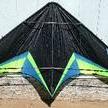Leaderboard
-
in all areas
- All areas
- Marker
- Marker Comments
- Marker Reviews
- Adverts
- Advert Questions
- Advert Reviews
- Articles
- Article Comments
- Article Reviews
- Blog Entries
- Blog Comments
- Files
- File Comments
- File Reviews
- Events
- Event Comments
- Event Reviews
- Images
- Image Comments
- Image Reviews
- Albums
- Album Comments
- Album Reviews
- Topics
- Posts
- Status Updates
- Status Replies
-
Custom Date
-
All time
June 25 2009 - April 19 2024
-
Year
April 19 2023 - April 19 2024
-
Month
March 19 2024 - April 19 2024
-
Week
April 12 2024 - April 19 2024
-
Today
April 19 2024
-
Custom Date
10/24/2018 - 10/24/2018
-
All time
Popular Content
Showing content with the highest reputation on 10/24/2018 in all areas
-
Welcome to this wonderful aspect of kiting! The original kite uses fiberglass for the standoffs, and I would tend to stick with what the manufacturer specifies if you are trying to bring it back to spec, unless you want to experiment with the effects of modifications. Carbon and fg have different bending qualities. (I suppose if you are stuck you could switch, but do both sides if you do). There are differing grades of fg, too, so checking with HQ or a kite shop would be useful. Don't know if you still have your spec sheet, but here is a link to the english version, which states fiberglass. https://www.invento-webshop.de/hq-lenkdrachen-support/pdf_en/11677630xx_Yukon_II_CSS_en.pdf If you are replacing a standoff, the sheet says it is of 2mm dia and 210mm long. For clarification: perhaps a point of nomenclature, but when you say 'ram', do you mean the little fittings that the standoff fits into at either the sail or spreader end? Those parts can be obtained at the sources referred to elsewhere in this thread. HQ does a pretty good job on support stuff such as manuals for their kites. I see that this spec sheet even shows bridle measurements for goodness sake! Would that it were true of all kites, everywhere I have the earlier Yukon version (not the Mark II). Fun little kite -- quite capable and sturdy if a little on the small side (and a wee bit speedy). While bendy, the fiberglas they use is super durable generally, and some of the kite parts are hybrid tubes. The kite is rated for both beginner and advanced flyers on that spec sheet, so nice move on your part as you develop. HTH .2 points
-
Hello kite life! I've been a lurker on here all summer. I've dabbled in flying things for year's, from me on a snowboard learning rodeo flips to 3d RC airplnes. Avid disc golfer building a new couse in my hometown. All ways had a cheap stunt kite to mess around with on surfing trips, but forgot it on a trip this spring. Popped into Zephyurs in Depoe Bay to pickup a ultimate disc to play catch with and walked out with a prism synapse 140. Went to Agate beach in way to much wind and had the time of my life.The next day the wind died and all I wanted to do was fly, bummer only way to kill the wind is to buy a new kite! So 6 months later I have acquired a prism hypnotist, 4d , 2 micons, sky dog jammin and Kymera. Watched some videos and learned to do fades and got some yo yos, then went to the Lincoln City kite festival and saw quads for the first time. Damn thats cool! How have I never seen these before? Sunday of the event I got up super early and there was no wind. Again? Walked around talking to people trying to buy a used Rev, but didn't really realize the caliber of who I was talking to. At some piont I had asked Conner Dorrian if he had a used Rev. Someone refered me to "John" I then realized he designed the kite I had tucked under my arm. He was cool enough to show be how to properly tension the wing tips. What a cool small community this kite thing really is. Ive just picked up a Rev classic 1.5 and finally clicked with it today, was really fighting the DLK muscle memory. Learning to fly a quad in central Oregon is a challenge. But I had an 'a haw" moment today and the brain connected to the lines. I think I can do this! Probably in the market for a vented/mid vent soon?1 point
-
If you don't have absolute control of the kite yet don't fly near people. PERIOD! Absolutely not worth the gamble. If you hurt someone -- a kite can kill -- you will regret it forever. It's best not to take the chance. Find a different place to fly, or walk down the beach far enough to where people aren't going. If you get the kite wet with salt water rinse it in fresh water as soon as you can afterwards. For your first dip in the water avoid anything with waves and current like the ocean and rivers. They will eat your kite. There is no way to keep people out of your fly zone, even if you cordon off the area as evidenced at kite festivals. Some will ignore everything and will take the shortest route to where they are going. Park the kite and wait until they pass. If they are heading for your lines yell "Watch out for the lines" until they hear you. You can keep the kite in the air if you think you can keep it up there until they pass. If you have any doubt, park it. If your lines are lying flat on the ground they are harder to trip over. Overall, just use common sense. Think of what you would expect if you were them. They have the right to use that space too. The length of your lines determines the size of your safety zone, so you can fly on shorter lines but things happen faster on short lines.1 point
-
save some more dough and skip directly to an acquisition of a Shook Mesh Masterpiece 75% as your next kite if you are after decent-to-big wind ranges. The sail is strips of fabric with gaps/holes in between. Lighter in weight than a full vent or an extraVent because the weight of the screening material is vastly higher than the Icarex sail material alone. I recommend a frame from Jon Trennepol (Skyshark called a CLX-150 or a travel frame of P-300 and P-90/or 100s). Ligher weight means a bigger wind range, like a 5-30 mph spread, depending on the framing choices. A light flexible frame is fun to flail around with alone, 'cause it instantly refills with pressure (after dumping it ~ doing tricks and such). A more rigid frame "tracks" better when flying in a group setting. Flexible wants to "turn in it's center", whilst a more rigid frame wants to rotate on a wing-tip. Does that make sense? The CLX frame is a fatter diameter (5/16s with plugs to fit Rev- End -Caps, so the leading edge has some curvature, ..... over the top ..... like a frisbee-shape instead of a dinner plate's edge on view. What does that matter?,.. that curvature GLIDES thru the air, as opposed to just falling like a rock. Some tricks, like a "Falling Leaf" want that glide removed,.... some like a throw&catch want the glide as pronounced as possible. The fatter wall diameter doesn't mean it can't flex and store energy. It is responsive and not at all a heavy solution. It will not replace a set of original Diamonds though (HA!) The Shook is made to your own specifications, no one else can have your color pattern. The 75% number represents a percentage, as compared to a mid-vent or a fully vented sail,... This one is in between them, but in reality it covers both wind ranges completely. Darn it, it should! they cost 600 bucks plus. But, its like buying a kite that is almost always perfect for today's conditions, even if they change during the occasion. Eliot makes 'em to your spec, call him (Flying Smiles Kites) and discuss your needs/desires/concerns/exceptations,... Sail comes in a variety of configurations: 40%, 75%, 100% and the 135%. Are you wanting a Dacron or nylon leading edge sleeve (why), a couple of bridle choices (Cath uses the French and Eliot is on a stocker), even magic sticks in a couple of lengths (16's are better) and LED lighting options, so light in weight you don't have to remove 'em. Simple seconds to install, water-proof and absolutely out of the way if you want to do "Clam-Shell Roll-ups" on the ground in the dark! You need 4 quad kites or more eventually; an indoor/SUL, a full sail, a Shook 75% and a Vicky-type, a few interchangeable frames for them, some different handle lengths, (longer for dead calm, so the action necessary to MAKE it fly,..... is in your hands, more so than in your whole body/or feet). Some different line lengths and strengths..... I recommend Skybond, it's thin, slippery and durable,... I carry 50#, 100# and 170#, but in the land of no-wind (Washington DC) the 50# lines are used more frequently. Don't waste a ton of dough on other solutions, and I pay retail+ myself, so I'm not compensated for this endorsement, just another happy customer if you are truly hooked get the Shook!1 point
-
I believe the Yukon standoffs bow. When bowing away from the kite wrapping the line around that part of the kite will break them. Hitting the ground hard with them bowed out makes them more vulnerable too.Kites like my Black Dog and your Yukon will be more prone to stand off issues. They'll pop out more often also. Sometimes in a failed trick or even a soft crash when the angle is right. If you've been flying them out bow them inwards towards the kite. It won't change the flight enough for you to notice. When replacing glue your end cap but wrap the other end in just enough scotch tape to keep it tight. Keeps from having to replace the standoff connector if and when another one breaks. I use carbon rods. Wrap where you are going to cut with tape. Use a very fine tooth saw or dremel. I use a dremel. Keeps the rods from splintering.Yukon is small, pretty light and pretty fast. Kite is tough enough for you to really hone your skills on ground work. Belly launches, axle landings/takeoffs, tip stand tricks and the like. Sucks when $1.50 worth of parts grounds you.1 point
-
Stock is 2mm fiberglass I always use Solid Carbon to make standoffs. Sent from my SM-T380 using Tapatalk1 point
-
Crashing is totally normal, I always say that I am better at fixing kites than flying them. I broke a leading edge on a treasured kite my last time out. It happens... Contact the Kite Shoppe (forum sponsor). I'm sure they can hook you up with the correct replacement. Unless you have a local store, T would be a trustworthy source on the internet. http://www.thekiteshoppe.com1 point




.thumb.jpg.53aabc63a639af8d375b2c92cf2e13f8.jpg)
